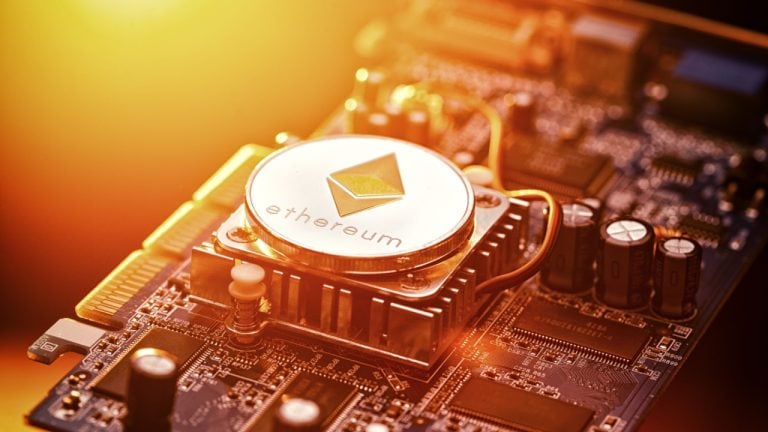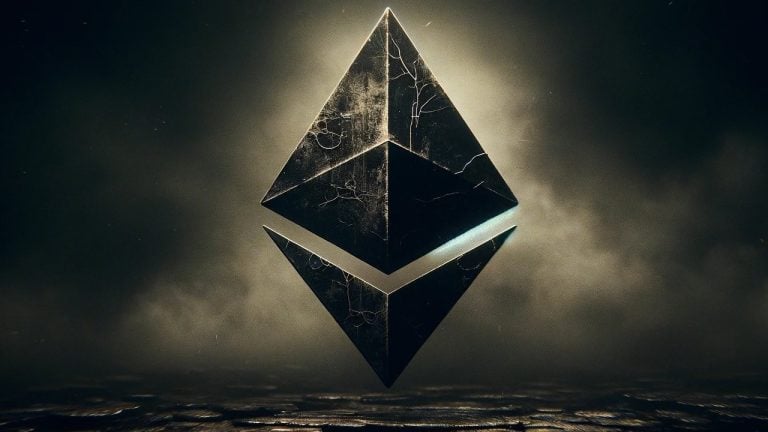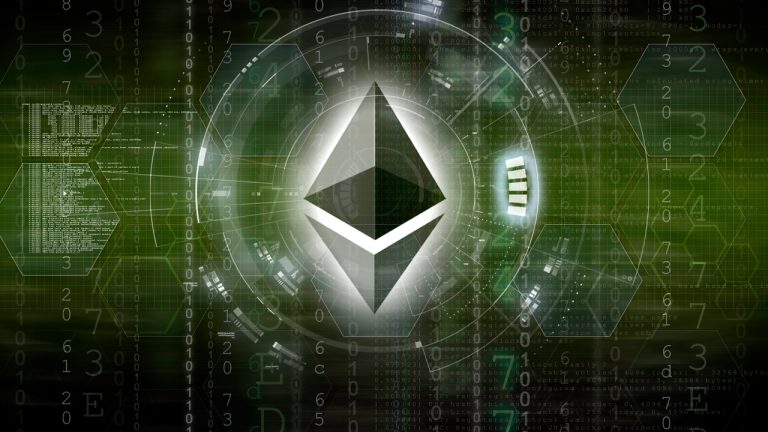 Following the debut of the Dencun upgrade and Ethereum blobs, enthusiasts have devised methods to embed data akin to how Ordinal inscriptions operate. Since this development, inscription-based activities now account for over 40% of blob transactions, leading to a significant increase in network activity. This uptick has resulted in a congestion of blob transactions, pushing […]
Following the debut of the Dencun upgrade and Ethereum blobs, enthusiasts have devised methods to embed data akin to how Ordinal inscriptions operate. Since this development, inscription-based activities now account for over 40% of blob transactions, leading to a significant increase in network activity. This uptick has resulted in a congestion of blob transactions, pushing […] According to Mai Fujimoto, a Japanese crypto influencer and co-founder of Intmax, the Ethereum Improvement Proposal (EIP) 4844 – also known as proto-danksharding – have emerged as a solid solution for addressing the Ethereum network’s scalability challenges. The EIP 4844 is also significant for scaling solutions such as zero-knowledge rollups (zkrollups) and Layer 2 chains […]
According to Mai Fujimoto, a Japanese crypto influencer and co-founder of Intmax, the Ethereum Improvement Proposal (EIP) 4844 – also known as proto-danksharding – have emerged as a solid solution for addressing the Ethereum network’s scalability challenges. The EIP 4844 is also significant for scaling solutions such as zero-knowledge rollups (zkrollups) and Layer 2 chains […] The Dencun upgrade was seamlessly integrated into the Ethereum mainnet at 9:55 Eastern Time (ET) on March 13, 2024. The upgrade officially went live at Beacon slot 8626176. Ethereum’s Leap Forward with Dencun Upgrade Expected to drastically lower the transaction costs for layer two (L2) networks, Dencun introduces vital improvements aimed at boosting Ethereum’s scalability. […]
The Dencun upgrade was seamlessly integrated into the Ethereum mainnet at 9:55 Eastern Time (ET) on March 13, 2024. The upgrade officially went live at Beacon slot 8626176. Ethereum’s Leap Forward with Dencun Upgrade Expected to drastically lower the transaction costs for layer two (L2) networks, Dencun introduces vital improvements aimed at boosting Ethereum’s scalability. […] Ethereum has shed a significant part of its supply since the London upgrade, applied in August 2021. According to ultrasound.money, a portal that records several statistics associated with the ETH burn, over 4 million ether (3.2%) have been removed from the network since the adoption of EIP-1559, which changed how fees are calculated. EIP-1559 Burns […]
Ethereum has shed a significant part of its supply since the London upgrade, applied in August 2021. According to ultrasound.money, a portal that records several statistics associated with the ETH burn, over 4 million ether (3.2%) have been removed from the network since the adoption of EIP-1559, which changed how fees are calculated. EIP-1559 Burns […] According to a recent Ethereum Core development meeting on Dec. 8, developers disclosed that the next Ethereum hard fork, called Shanghai, could be implemented by March 2023. It’s been suggested that the Shanghai hard fork will be able to manage the network’s staked ethereum withdrawals. Ethereum Devs Aim for Hard Fork Target ‘Around March-ish’ On […]
According to a recent Ethereum Core development meeting on Dec. 8, developers disclosed that the next Ethereum hard fork, called Shanghai, could be implemented by March 2023. It’s been suggested that the Shanghai hard fork will be able to manage the network’s staked ethereum withdrawals. Ethereum Devs Aim for Hard Fork Target ‘Around March-ish’ On […]
A tentative timeline of March 2023 has been set for the Shanghai upgrade which will enable staking withdrawals, a list of EIPs have also been packaged in but EIP-4844 didn't make the cut.
Ethereum core developers have opted to prioritize the enabling of staking withdrawals via the Shanghai upgrade first before implementing The Surge-related Ethereum Improvement Proposal (EIP)-4884.
As reported by Cointelegraph, the next key milestone on Ethereum’s roadmap is the Shanghai upgrade, which will enable withdrawals for ETH stakers/validators from the Beacon Chain — among other things.
EIP-4884 is also important and was initially expected to be packaged in with Shanghai, introducing “proto-danksharding” to significantly enhance Layer 2 rollup scalability (The Surge) ahead of the full implementation of the major Sharding upgrade late next year.
However, according to Ethereum core developer Tim Beiko at the latest Ethereum Core Developers Meeting on Dec. 8, the ultimate consensus was to focus on Shanghai first to avoid any potential delays if EIP-4844 were to not be ready in time.
In a rundown thread on Twitter, Beiko noted that everyone agreed to “(1) seeing Shanghai happen quickly, ideally around March and (2) following this with a fork centered around EIP-4844.”
While EIP-4844 won't be included, the devs have agreed to include a set of EIPs that essentially upgrade the Ethereum Virtual Machine (EVM), including introducing a new EVM contract format, code/data separations and new operation codes.
Beiko noted that as these upgrades, known as EVM Object Format (EOF) are quite easy to walk back and remove from Shanghai, if devs haven’t finished working on it when Shanghai is ready for implementation, then EOF will simply be removed and shipped later.
Additionally, a set of previously agreed upon EIPs will roll out alongside Shanghai, the list includes EIP-3651: Warm Coinbase, EIP-3855: PUSH0 instruction, EIP-3860: Limit and meter initcode and EIP-4895: Beacon chain push withdrawals as operations.
So, that's where we landed for Shanghai: Withdrawals, EOF & a few already implemented EIPs (PUSH0, Warm COINBASE, Limit/Meter initcode) are what we will go for. If by January, we don't meet the EOF milestones mentioned above, we'll remove it from Shanghai so withdrawals ship ASAP
— timbeiko.eth (@TimBeiko) December 8, 2022
EIP-3651: Warm Coinbase in particular will potentially have some cost reduction benefits for the network. Not to be confused with the name of crypto exchange, Coinbase in this context refers to the name of the software that builders use to receive new tokens on the network.
Every new transaction on the platform needs to interact with the Coinbase software multiple times, however, the initial transactions start off more expensive as Coinbase essentially needs time to warm up.
Related: Ethereum developers target March 2023 for Shanghai hard fork
With the new EIP implementation, this won’t be the case anymore and thus lowering gas fees when builders are interacting with it.
As per the Ethereum Foundation, Sharding is a multi-phase upgrade designed to significantly ramp up Ethereum’s “scalability and capacity” via the implementation of shard chains, which will give the network significantly “more capacity to store and access data.”
With the improved data storage capabilities, this will essentially enable Layer 2 solutions to offer much lower transaction fees.
After all of this is completed, the network's next major event and final part of the roadmap is the Sharding upgrade, which is expected to roll out over 2023 and 2024.

Users will be able to withdrew their staked Ether and applicable rewards after the upgrade goes live.
According to a discussion at the 151st Ethereum Core Developers Meeting on Dec. 8, core programmers set a tentative deadline of March 2023 for the Shanghai hard fork. In addition, developers will aim for May or June 2023 to launch Ethereum Improvement Protocol (EIP) 4844 upgrade that will introduce proto-danksharding to the network.
Although the much-anticipated proof-of-stake Merge upgrade was completed on Sept. 15, staked Ether (stETH), are currently locked on the Ethereum Beacon Chain. The token is created by decentralized finance protocol Lido with close to 3.5 million stETH ($4.48 billion) in circulation. After the Shanghai upgrade, stETH users can withdraw their funds along with any applicable staking rewards for validating network transactions. The Ethereum Foundation said that it structured the upgrades in this manner to "simplify and maximize focus on a successful transition to proof-of-stake."
After the hard fork, the EIP-4844 upgrade is designed to introduce a new data-blob-transaction prototype previously invented by developers on Feb. 21, 2022. Currently, layer-2 technologies such as optimism rollups can move Ethereum computation and network storage off-chain to improve scalability by 10x to 100x. Developers anticipate that by introducing large portable bundles that can contain cheaper data in Ethereum transactions, it can improve the capacity of rollups by up to 100x. However, while the upgrade will lower the transaction fees on layer-2 solutions, it will not affect Ethereum gas fees.
At @EthereumDenver we hacked together a full data-blob-transaction prototype! (a.k.a. mini-danksharding)
— proto.eth (@protolambda) February 20, 2022
Data blobs are the first milestone towards full ethereum sharding, enabling rollups like @optimismPBC to grow 100x in capacity.
Here's a tweet thread about the prototype
Last December, co-founder Vitalik Buterin shared that his endgame was for Ethereum to act as a simple base-layer while users are "fully comfortable storing their assets in a ZK [zero-knowledge]-rollup running a full EVM [Ethereum Virtual Machine]." Buterin also warned that sharding and data availability sampling are "complex technologies" and would take years of audits and refinement to implement.